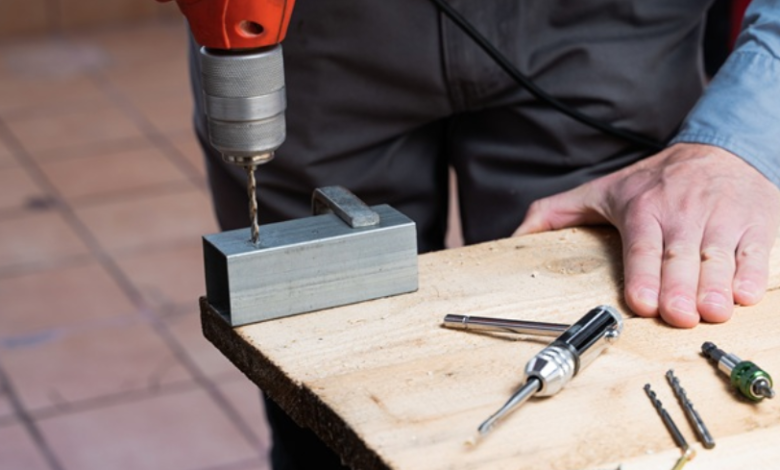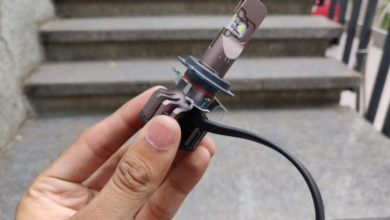Understanding the Essential Tools Used in Metal Bending

Introduction
In the metal fabrication industry, precision and accuracy are crucial to producing parts that meet strict dimensional and quality standards. Among the most vital machines used for shaping metal sheets is the press brake. This equipment performs bending operations through carefully designed and fitted tools that allow manufacturers to achieve various bend angles, shapes, and profiles. The correct selection, maintenance, and use of press brake tools determine not only the quality of the finished product but also the machine’s efficiency and longevity.
The Importance of Proper Tool Selection
Every metal bending task requires specific tools to handle different materials, thicknesses, and bend types. Choosing the right tools ensures that the bending process runs smoothly and that the metal sheet does not experience cracks or distortion. Inaccurate tool selection can cause poor-quality bends, excessive wear on the machine, or even permanent damage to the tooling. Therefore, selecting suitable tools for each application is essential to maintain accuracy, reduce waste, and enhance production efficiency.
See also: The Techniques of CNC Turning for Precision Components: Exploring
Components of the Tooling System
A press brake tooling setup consists of two main components: the punch and the die.
- Punch: The punch is mounted on the upper beam of the press brake and applies force downward onto the sheet metal. It determines the angle and shape of the bend.
- Die: The die is fixed on the lower bed of the machine and provides a cavity into which the metal is formed. It defines the final bend radius and supports the workpiece during bending.
Together, these tools shape the metal sheet with precision. The combination of punch and die profiles influences the bend angle, radius, and depth.
Types of Punches
Different types of punches are used depending on the bending application. Below are the most commonly used varieties:
- Straight Punch: Ideal for standard air bending operations and simple angle formations.
- Gooseneck Punch: Designed to allow clearance for forming deeper channels or parts with flanges.
- Acute Punch: Used for creating sharp angles less than 90 degrees.
- Radius Punch: Produces rounded bends suitable for materials sensitive to cracking.
- Hemming Punch: Used in combination with hemming dies to flatten or fold sheet edges.
Choosing the appropriate punch type ensures better accuracy and consistency during production.
Types of Dies
Dies come in a wide range of configurations to complement punches. The most common die types include:
- V-Dies: The most widely used design, ideal for air bending applications. The width of the V-opening determines the bending radius.
- U-Dies: Used for forming U-shaped profiles or channels.
- Acute Angle Dies: Designed for bends tighter than 90 degrees.
- Hemming Dies: Work with hemming punches to fold sheet edges flat.
- Offset Dies: Used to form Z-shaped or step bends in one operation.
Selecting the correct die depends on material type, sheet thickness, and the desired final shape.
Material Used in Manufacturing Tools
The performance and durability of press brake tools depend on the material from which they are made. Common materials include:
- Tool Steel: Offers excellent hardness and wear resistance for heavy-duty applications.
- Hardened Steel: Provides long service life under high-pressure operations.
- Carbide: Ensures precision and longevity, especially in fine bending work.
- Aluminum: Used for lightweight applications and for bending softer materials.
The choice of tool material impacts the accuracy, tool life, and surface finish of the finished parts.
Influence of Tool Geometry
Tool geometry plays a critical role in the bending process. The punch radius, die opening, and angle determine how the material flows and bends. A larger die opening results in less force being required but produces a larger bend radius. Conversely, smaller die openings increase the bending force and produce tighter angles.
Operators must consider material type, sheet thickness, and desired bend radius before selecting the punch and die combination. Properly matched tooling reduces stress on the material and ensures consistent results.
Tool Setup and Alignment
Setting up tools correctly is vital for accurate bending. Misalignment between the punch and die can result in uneven bends, part defects, or even damage to the machine. Before operation, the following steps are typically followed:
- Inspect the punch and die for cleanliness and damage.
- Ensure the tools are properly clamped and aligned.
- Perform a test bend to verify accuracy.
- Adjust alignment or pressure if necessary.
Regular inspection and calibration ensure consistent performance and extend the life of the tools.
Maintenance and Care of Tools
Proper maintenance extends the service life of press brake tools and prevents costly downtime. Some essential practices include:
- Cleaning tools after each use to remove debris or residues.
- Applying protective coatings or lubricants to prevent rust.
- Storing tools in a clean, dry environment.
- Inspecting for wear, nicks, or deformation regularly.
Replacing worn tools promptly ensures that the bending accuracy is not compromised and reduces the risk of machine damage.
Technological Advancements in Tooling
Modern innovations have transformed the way press brake tools are designed and used. Today’s tooling systems are more efficient, durable, and easy to use than ever before. Key developments include:
- Quick-Change Tooling Systems: Allow operators to switch between tools rapidly, minimizing setup time.
- CNC Tool Recognition: Some machines automatically detect installed tools and adjust bending parameters accordingly.
- Precision-Ground Tools: Manufactured with tight tolerances to ensure uniform bending.
- Segmented Tooling: Enables flexible configurations for bending complex shapes or shorter parts.
These advancements enhance productivity and improve bending consistency in both small and large-scale production.
Applications Across Industries
Press brakes and their tools are widely used in various sectors of manufacturing. Industries that rely heavily on these tools include:
- Automotive: For producing car body panels, frames, and structural parts.
- Aerospace: For manufacturing precise components that meet strict tolerances.
- Construction: For fabricating beams, channels, and architectural panels.
- Appliance Manufacturing: For forming metal casings, brackets, and enclosures.
- Heavy Machinery: For bending thick metal plates used in equipment and vehicles.
Each industry requires specialized tool configurations tailored to specific production needs.
Safety Measures When Using Tools
Operating a press brake involves handling heavy and high-pressure equipment, making safety a top priority. To ensure operator safety:
- Always verify that tools are securely clamped before operation.
- Keep hands and body parts away from the bending area.
- Use appropriate personal protective equipment such as gloves and safety glasses.
- Follow proper lifting techniques or use handling devices when moving heavy tools.
- Never attempt maintenance while the machine is powered on.
Following these safety precautions helps prevent accidents and equipment damage.
Benefits of Using High-Quality Tools
Investing in premium-quality press brake tools offers multiple benefits for manufacturers, such as:
- Enhanced Accuracy: Produces precise bends with consistent results.
- Reduced Downtime: Durable tools require fewer replacements or adjustments.
- Increased Productivity: Faster setup and reduced errors improve efficiency.
- Long-Term Cost Savings: Quality tools last longer, minimizing replacement costs.
- Superior Surface Finish: Prevents scratches or imperfections on bent parts.
In competitive manufacturing environments, these advantages contribute to improved quality and profitability.
Conclusion
Press brake tools are at the heart of precision metal fabrication. Their design, material, and alignment directly affect the quality and accuracy of every bend produced. From simple punches and dies to advanced quick-change and CNC-recognized systems, modern tooling has evolved to support faster and more efficient operations.
Understanding how to select, maintain, and handle these tools correctly ensures consistent performance, longer tool life, and safer working conditions. As technology continues to advance, manufacturers can expect even greater improvements in efficiency, accuracy, and versatility, all made possible through the evolution of press brake tools.





